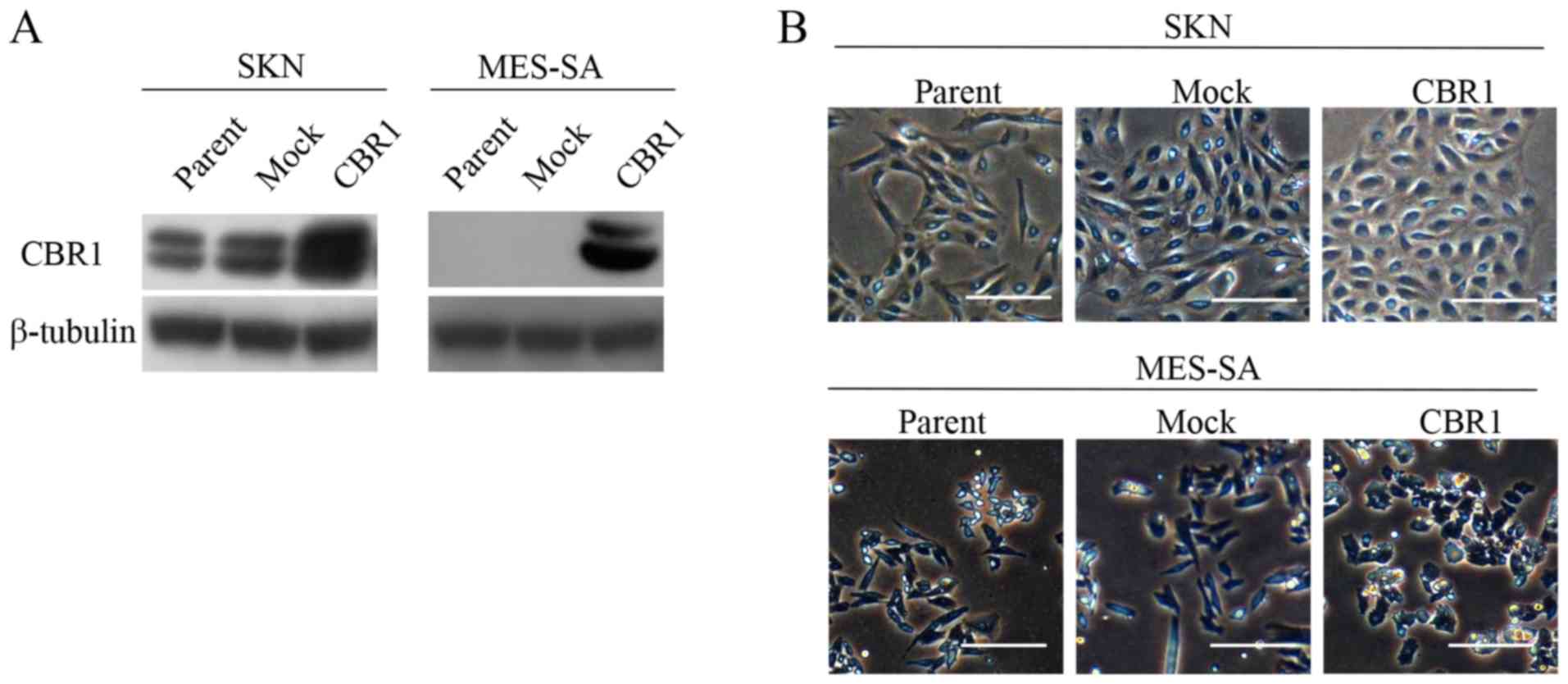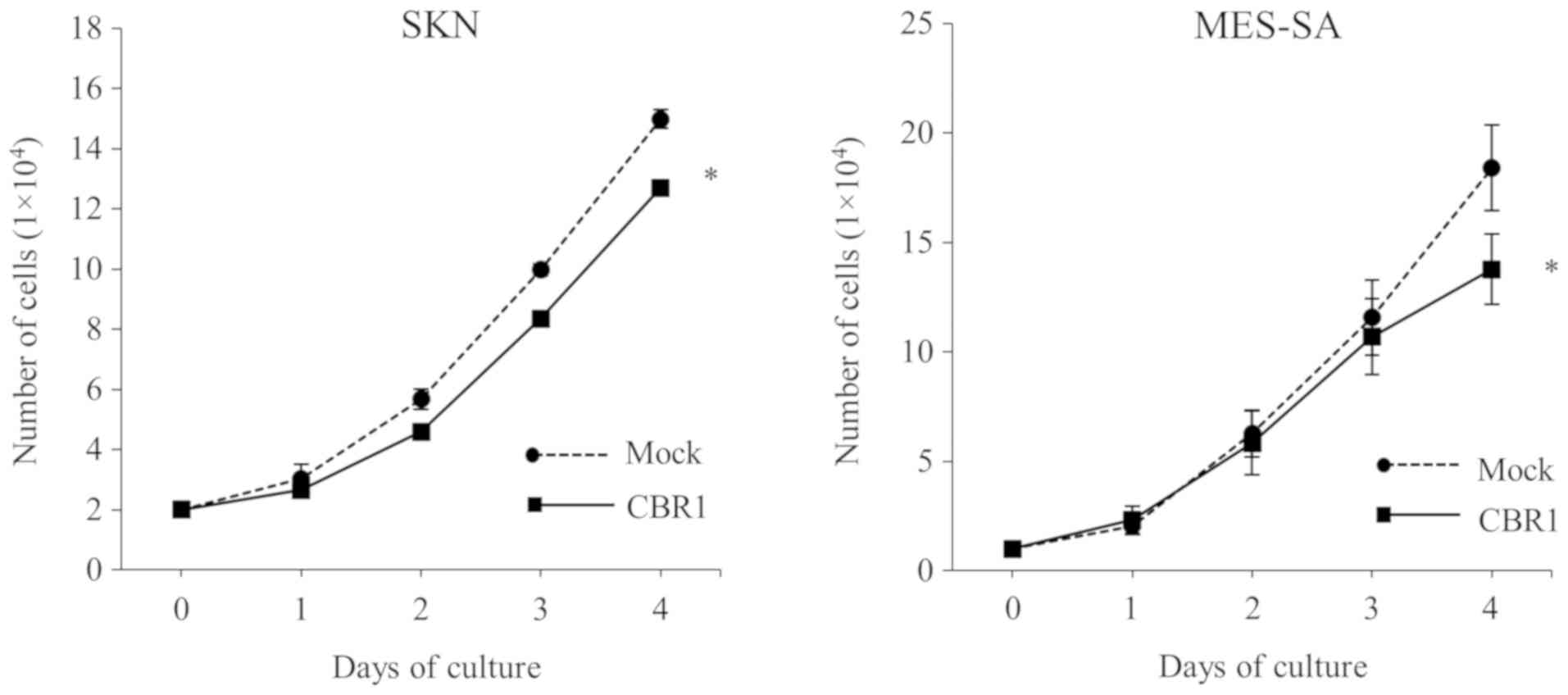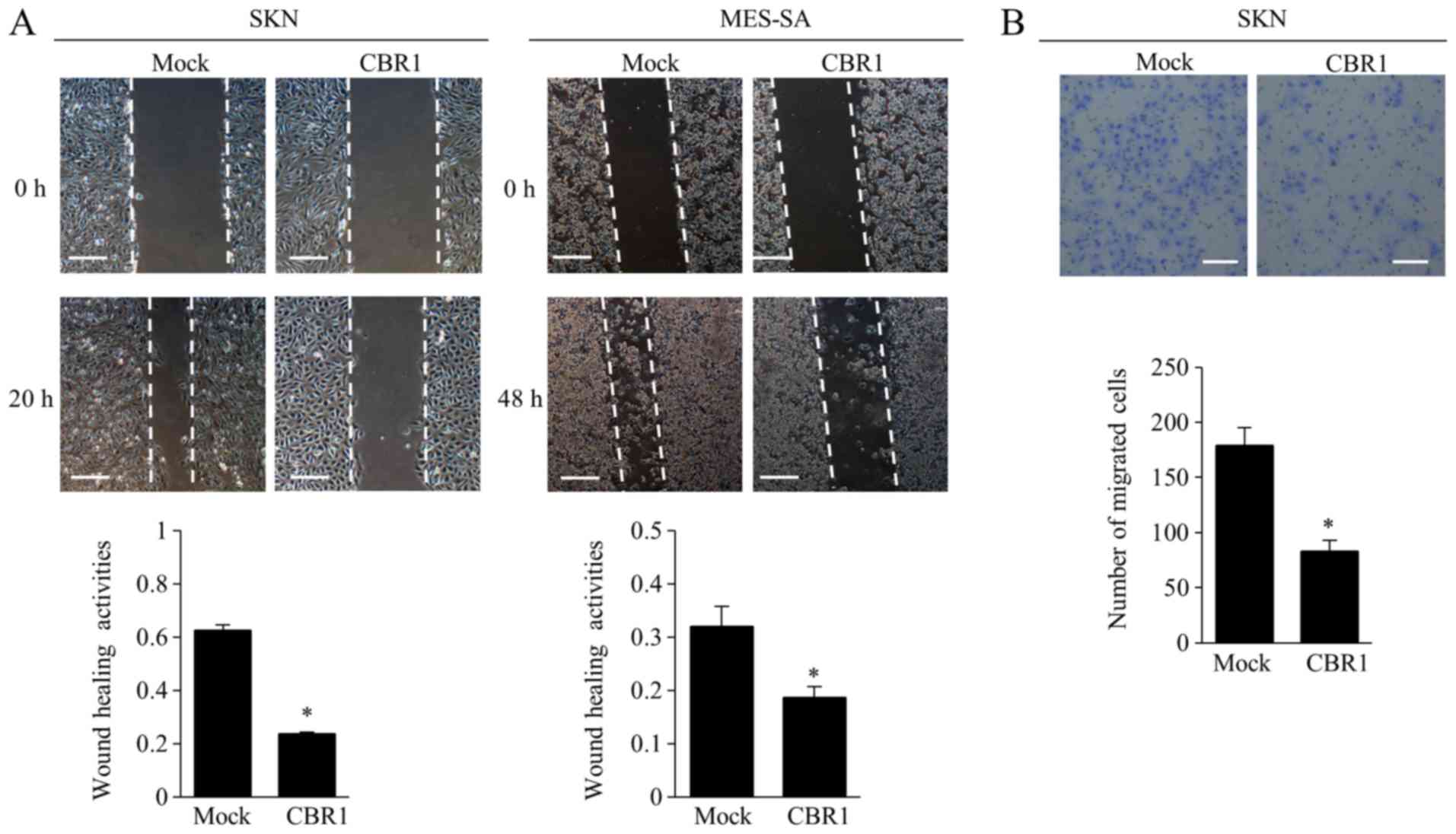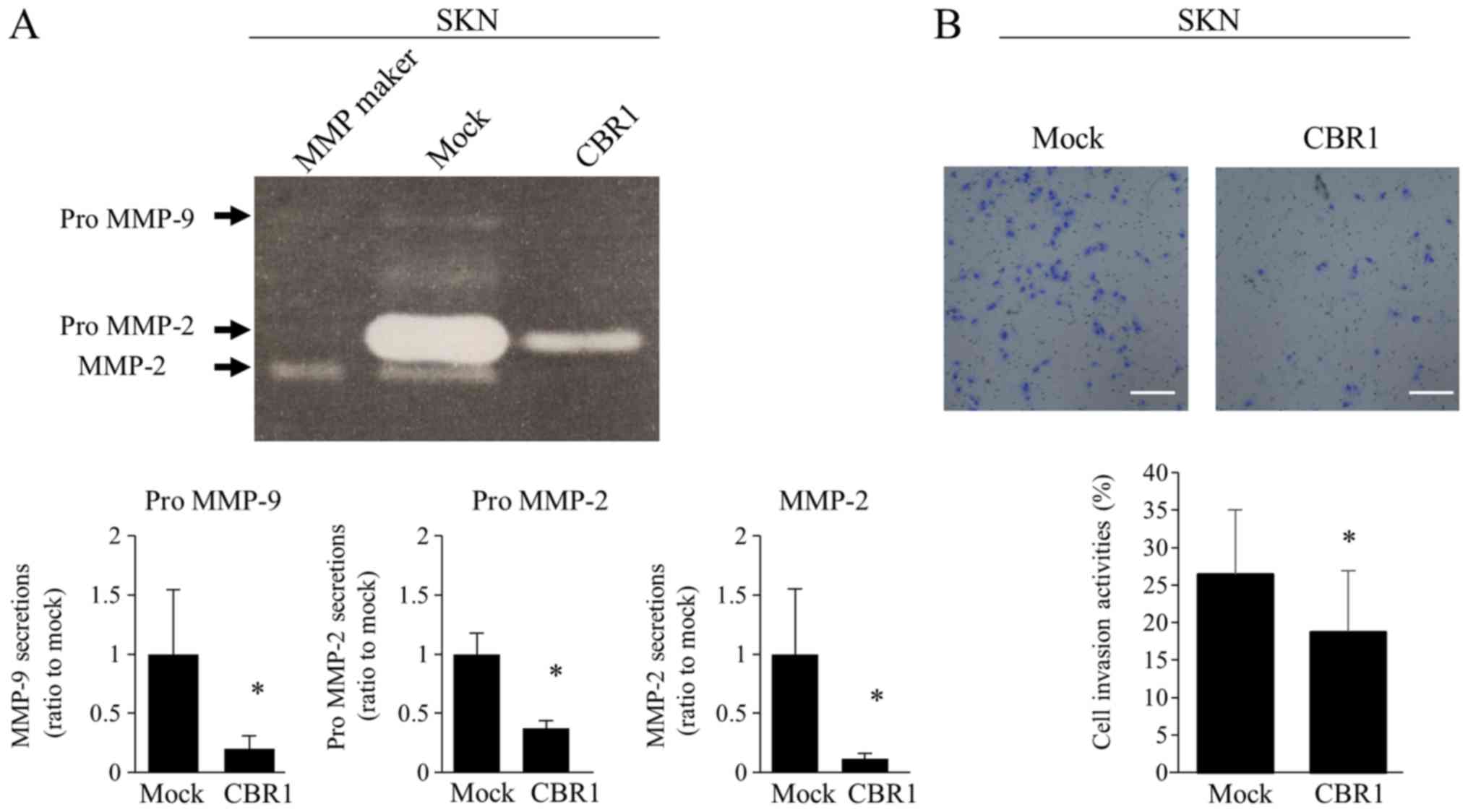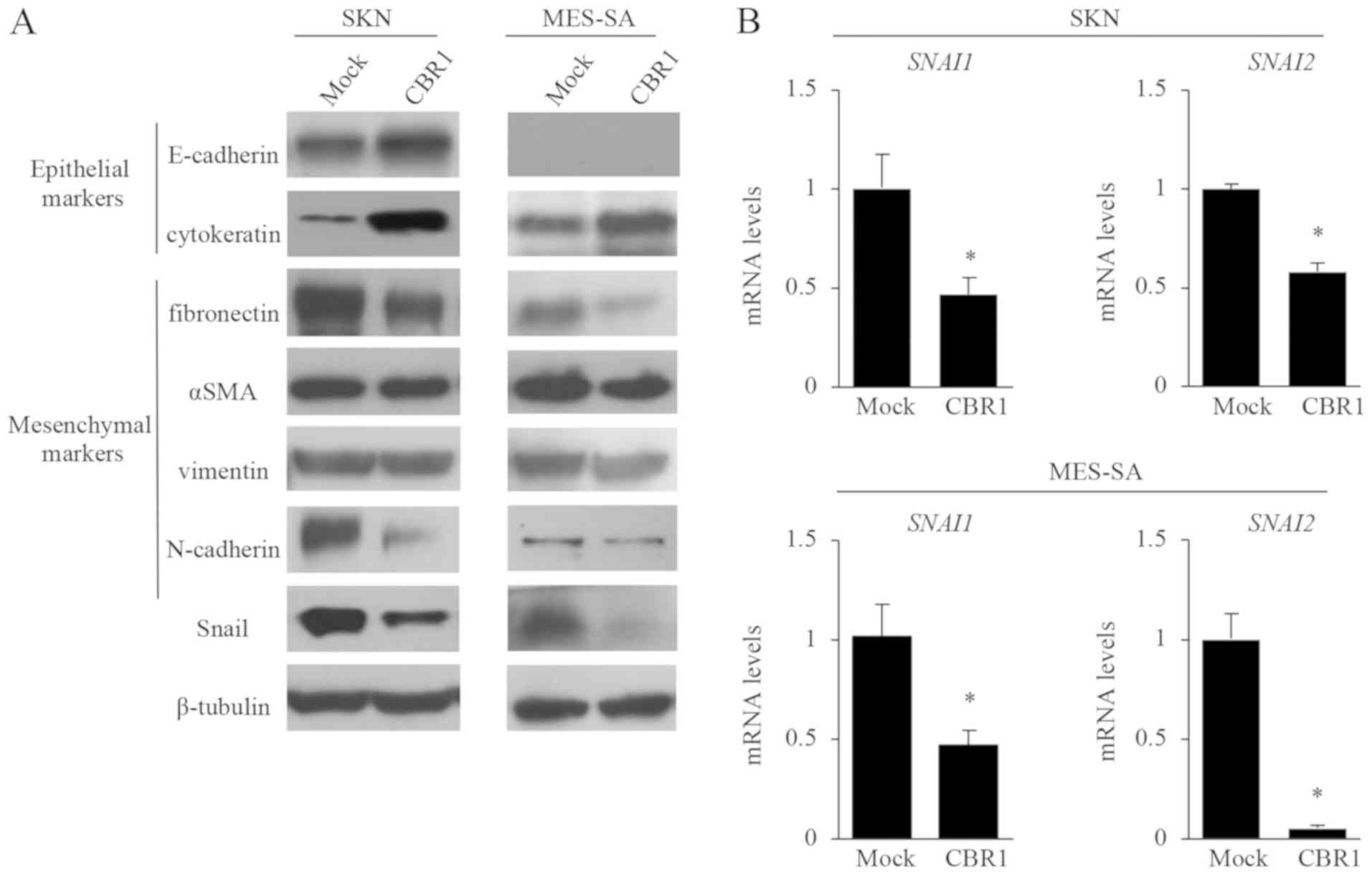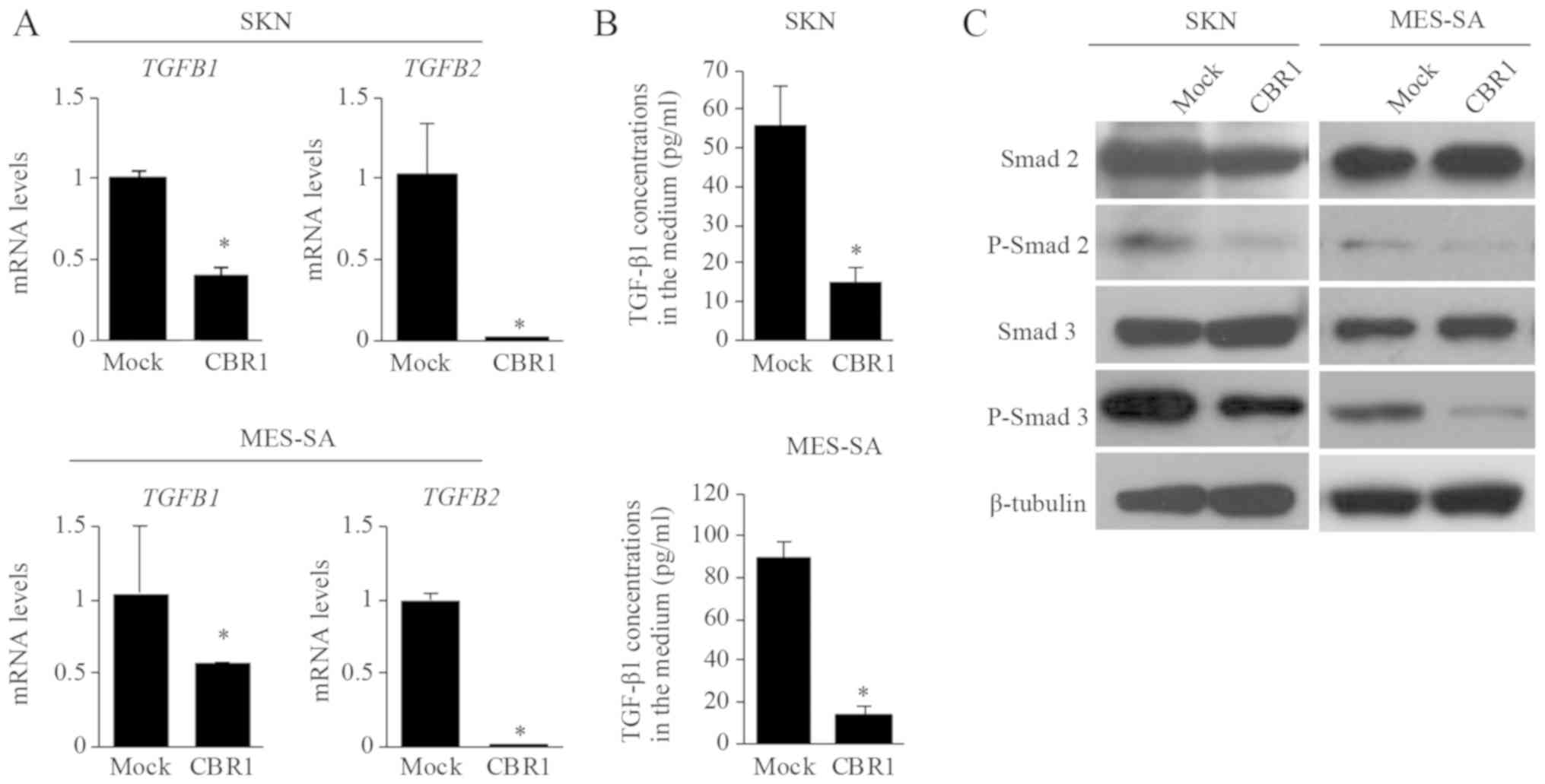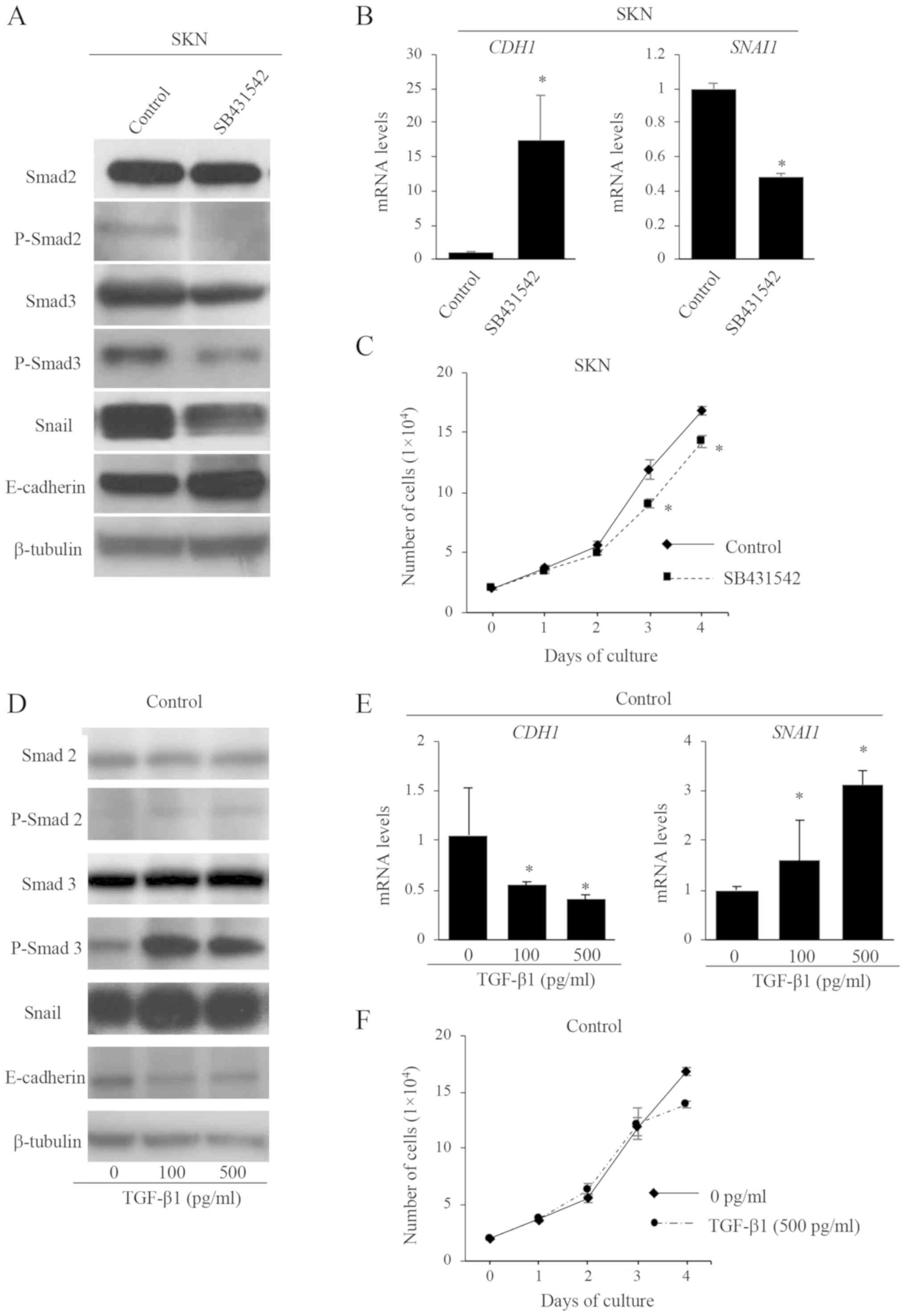|
1
|
Zang Y, Gu L, Zhang Y, Wang Y and Xue F:
Identification of key genes and pathways in uterine leiomyosarcoma
through bioinformatics analysis. Oncol Lett. 15:9361–9368.
2018.PubMed/NCBI
|
|
2
|
Ricci S, Stone RL and Fader AN: Uterine
leiomyosarcoma: Epidemiology, contemporary treatment strategies and
the impact of uterine morcellation. Gynecol Oncol. 145:208–216.
2017. View Article : Google Scholar : PubMed/NCBI
|
|
3
|
George S, Barysauskas C, Serrano C,
Oduyebo T, Rauh-Hain JA, Del Carmen MG, Demetri GD and Muto MG:
Retrospective cohort study evaluating the impact of intraperitoneal
morcellation on outcomes of localized uterine leiomyosarcoma.
Cancer. 120:3154–3158. 2014. View Article : Google Scholar : PubMed/NCBI
|
|
4
|
Raine-Bennett T, Tucker LY, Zaritsky E,
Littell RD, Palen T, Neugebauer R, Axtell A, Schultze PM, Kronbach
DW, Embry-Schubert J, et al: Occult uterine sarcoma and
leiomyosarcoma: Incidence of and survival associated with
morcellation. Obstet Gynecol. 127:29–39. 2016. View Article : Google Scholar : PubMed/NCBI
|
|
5
|
Einstein MH, Barakat RR, Chi DS, Sonoda Y,
Alektiar KM, Hensley ML and Abu-Rustum NR: Management of uterine
malignancy found incidentally after supracervical hysterectomy or
uterine morcellation for presumed benign disease. Int J Gynecol
Cancer. 18:1065–1070. 2008. View Article : Google Scholar : PubMed/NCBI
|
|
6
|
Oduyebo T, Rauh-Hain AJ, Meserve EE,
Seidman MA, Hinchcliff E, George S, Quade B, Nucci MR, Del Carmen
MG and Muto MG: The value of re-exploration in patients with
inadvertently morcellated uterine sarcoma. Gynecol Oncol.
132:360–365. 2014. View Article : Google Scholar : PubMed/NCBI
|
|
7
|
Parker WH, Fu YS and Berek JS: Uterine
sarcoma in patients operated on for presumed leiomyoma and rapidly
growing leiomyoma. Obstet Gynecol. 83:414–418. 1994.PubMed/NCBI
|
|
8
|
Harris JA, Swenson CW, Uppal S, Kamdar N,
Mahnert N, As-Sanie S and Morgan DM: Practice patterns and
postoperative complications before and after US Food and Drug
Administration safety communication on power morcellation. Am J
Obstet Gynecol. 214:e1–98.e13. 2016. View Article : Google Scholar
|
|
9
|
Ducie JA and Leitao MM Jr: The role of
adjuvant therapy in uterine leiomyosarcoma. Expert Rev Anticancer
Ther. 16:45–55. 2016. View Article : Google Scholar : PubMed/NCBI
|
|
10
|
Amant F, Lorusso D, Mustea A, Duffaud F
and Pautier P: Management strategies in advanced uterine
leiomyosarcoma: Focus on trabectedin. Sarcoma. 2015:7041242015.
View Article : Google Scholar : PubMed/NCBI
|
|
11
|
Kapp DS, Shin JY and Chan JK: Prognostic
factors and survival in 1396 patients with uterine leiomyosarcomas:
Emphasis on impact of lymphadenectomy and oophorectomy. Cancer.
112:820–830. 2008. View Article : Google Scholar : PubMed/NCBI
|
|
12
|
Zivanovic O, Leitao MM, Iasonos A, Jacks
LM, Zhou Q, Abu-Rustum NR, Soslow RA, Juretzka MM, Chi DS, Barakat
RR, et al: Stage-specific outcomes of patients with uterine
leiomyosarcoma: A comparison of the international Federation of
gynecology and obstetrics and American joint committee on cancer
staging systems. J Clin Oncol. 27:2066–2072. 2009. View Article : Google Scholar : PubMed/NCBI
|
|
13
|
Penning TM and Drury JE: Human aldo-keto
reductases: Function, gene regulation, and single nucleotide
polymorphisms. Arch Biochem Biophys. 464:241–250. 2007. View Article : Google Scholar : PubMed/NCBI
|
|
14
|
Mindnich RD and Penning TM: Aldo-keto
reductase (AKR) superfamily: Genomics and annotation. Hum Genomics.
3:362–370. 2009.PubMed/NCBI
|
|
15
|
Wermuth B, Bohren KM, Heinemann G, von
Wartburg JP and Gabbay KH: Human carbonyl reductase. Nucleotide
sequence analysis of a cDNA and amino acid sequence of the encoded
protein. J Biol Chem. 263:16185–16188. 1988.PubMed/NCBI
|
|
16
|
Ismail E, Al-Mulla F, Tsuchida S, Suto K,
Motley P, Harrison PR and Birnie GD: Carbonyl reductase: A novel
metastasis-modulating function. Cancer Res. 60:1173–1176.
2000.PubMed/NCBI
|
|
17
|
Murakami A, Fukushima C, Yoshidomi K,
Sueoka K, Nawata S, Yokoyama Y, Tsuchida S, Ismail E, Al-Mulla F
and Sugino N: Suppression of carbonyl reductase expression enhances
malignant behaviour in uterine cervical squamous cell carcinoma:
Carbonyl reductase predicts prognosis and lymph node metastasis.
Cancer Lett. 311:77–84. 2011. View Article : Google Scholar : PubMed/NCBI
|
|
18
|
Murakami A, Yakabe K, Yoshidomi K, Sueoka
K, Nawata S, Yokoyama Y, Tsuchida S, Al-Mulla F and Sugino N:
Decreased carbonyl reductase 1 expression promotes malignant
behaviours by induction of epithelial mesenchymal transition and
its clinical significance. Cancer Lett. 323:69–76. 2012. View Article : Google Scholar : PubMed/NCBI
|
|
19
|
Osawa Y, Yokoyama Y, Shigeto T, Futagami M
and Mizunuma H: Decreased expression of carbonyl reductase 1
promotes ovarian cancer growth and proliferation. Int J Oncol.
46:1252–1258. 2015. View Article : Google Scholar : PubMed/NCBI
|
|
20
|
Umemoto M, Yokoyama Y, Sato S, Tsuchida S,
Al-Mulla F and Saito Y: Carbonyl reductase as a significant
predictor of survival and lymph node metastasis in epithelial
ovarian cancer. Br J Cancer. 85:1032–1036. 2001. View Article : Google Scholar : PubMed/NCBI
|
|
21
|
Nishimoto Y, Murakami A, Sato S, Kajimura
T, Nakashima K, Yakabe K, Sueoka K and Sugino N: Decreased carbonyl
reductase 1 expression promotes tumor growth via epithelial
mesenchymal transition in uterine cervical squamous cell
carcinomas. Reprod Med Biol. 17:173–181. 2018. View Article : Google Scholar : PubMed/NCBI
|
|
22
|
Miura R, Yokoyama Y, Shigeto T, Futagami M
and Mizunuma H: Inhibitory effect of carbonyl reductase 1 on
ovarian cancer growth via tumor necrosis factor receptor signaling.
Int J Oncol. 47:2173–2180. 2015. View Article : Google Scholar : PubMed/NCBI
|
|
23
|
Thiery JP, Acloque H, Huang RY and Nieto
MA: Epithelial-mesenchymal transitions in development and disease.
Cell. 139:871–890. 2009. View Article : Google Scholar : PubMed/NCBI
|
|
24
|
Lamouille S, Xu J and Derynck R: Molecular
mechanisms of epithelial-mesenchymal transition. Nat Rev Mol Cell
Biol. 15:178–196. 2014. View
Article : Google Scholar : PubMed/NCBI
|
|
25
|
Perl AK, Wilgenbus P, Dahl U, Semb H and
Christofori G: A causal role for E-cadherin in the transition from
adenoma to carcinoma. Nature. 392:190–193. 1998. View Article : Google Scholar : PubMed/NCBI
|
|
26
|
Banyard J and Bielenberg DR: The role of
EMT and MET in cancer dissemination. Connect Tissue Res.
56:403–413. 2015. View Article : Google Scholar : PubMed/NCBI
|
|
27
|
Kahlert UD, Joseph JV and Kruyt FAE: EMT-
and MET-related processes in nonepithelial tumors: Importance for
disease progression, prognosis, and therapeutic opportunities. Mol
Oncol. 11:860–877. 2017. View Article : Google Scholar : PubMed/NCBI
|
|
28
|
Song C, Liu W and Li J: USP17 is
upregulated in osteosarcoma and promotes cell proliferation,
metastasis, and epithelial-mesenchymal transition through
stabilizing SMAD4. Tumour Biol. 39:10104283177171382017. View Article : Google Scholar : PubMed/NCBI
|
|
29
|
Zeng SX, Cai QC, Guo CH, Zhi LQ, Dai X,
Zhang DF and Ma W: High expression of TRIM29 (ATDC) contributes to
poor prognosis and tumor metastasis by inducing
epithelial-mesenchymal transition in osteosarcoma. Oncol Rep.
38:1645–1654. 2017. View Article : Google Scholar : PubMed/NCBI
|
|
30
|
Sannino G, Marchetto A, Kirchner T and
Grünewald TGP: Epithelial-to-Mesenchymal and
Mesenchymal-to-Epithelial transition in mesenchymal tumors: A
paradox in sarcomas? Cancer Res. 77:4556–4561. 2017. View Article : Google Scholar : PubMed/NCBI
|
|
31
|
Kong G, Jiang Y, Sun X, Cao Z, Zhang G,
Zhao Z, Zhao Y, Yu Q and Cheng G: Irisin reverses the IL-6 induced
epithelial-mesenchymal transition in osteosarcoma cell migration
and invasion through the STAT3/Snail signaling pathway. Oncol Rep.
38:2647–2656. 2017. View Article : Google Scholar : PubMed/NCBI
|
|
32
|
Peng C, Zhao H, Song Y, Chen W, Wang X,
Liu X, Zhang C, Zhao J, Li J, Cheng G, et al: SHCBP1 promotes
synovial sarcoma cell metastasis via targeting TGF-β1/Smad
signaling pathway and is associated with poor prognosis. J Exp Clin
Cancer Res. 36:1412017. View Article : Google Scholar : PubMed/NCBI
|
|
33
|
Tang J, Shen L, Yang Q and Zhang C:
Overexpression of metadherin mediates metastasis of osteosarcoma by
regulating epithelial-mesenchymal transition. Cell Prolif.
47:427–434. 2014. View Article : Google Scholar : PubMed/NCBI
|
|
34
|
Zavadil J and Böttinger EP: TGF-beta and
epithelial-to-mesenchymal transitions. Oncogene. 24:5764–5774.
2005. View Article : Google Scholar : PubMed/NCBI
|
|
35
|
Qi Y, Wang N, He Y, Zhang J, Zou H, Zhang
W, Gu W, Huang Y, Lian X, Hu J, et al: Transforming growth
factor-β1 signaling promotes epithelial-mesenchymal transition-like
phenomena, cell motility, and cell invasion in synovial sarcoma
cells. PLoS One. 12:e01826802017. View Article : Google Scholar : PubMed/NCBI
|
|
36
|
Yoshidomi K, Murakami A, Yakabe K, Sueoka
K, Nawata S and Sugino N: Heat shock protein 70 is involved in
malignant behaviors and chemosensitivities to cisplatin in cervical
squamous cell carcinoma cells. J Obstet Gynaecol Res. 40:1188–1196.
2014. View Article : Google Scholar : PubMed/NCBI
|
|
37
|
Murakami A, Nakagawa T, Kaneko M, Nawata
S, Takeda O, Kato H and Sugino N: Suppression of SCC antigen
promotes cancer cell invasion and migration through the decrease in
E-cadherin expression. Int J Oncol. 29:1231–1235. 2006.PubMed/NCBI
|
|
38
|
Nakagawa T, Murakami A, Torii M, Nawata S,
Takeda O and Sugino N: E-cadherin increases squamous cell carcinoma
antigen expression through phosphatidylinositol-3 kinase-Akt
pathway in squamous cell carcinoma cell lines. Oncol Rep.
18:175–179. 2007.PubMed/NCBI
|
|
39
|
Xu J, Lamouille S and Derynck R:
TGF-beta-induced epithelial to mesenchymal transition. Cell Res.
19:156–172. 2009. View Article : Google Scholar : PubMed/NCBI
|
|
40
|
Deckers M, van Dinther M, Buijs J, Que I,
Löwik C, van der Pluijm G and ten Dijke P: The tumor suppressor
Smad4 is required for transforming growth factor beta-induced
epithelial to mesenchymal transition and bone metastasis of breast
cancer cells. Cancer Res. 66:2202–2209. 2006. View Article : Google Scholar : PubMed/NCBI
|
|
41
|
Morizane R, Fujii S, Monkawa T, Hiratsuka
K, Yamaguchi S, Homma K and Itoh H: miR-34c attenuates
epithelial-mesenchymal transition and kidney fibrosis with ureteral
obstruction. Sci Rep. 4:45782014. View Article : Google Scholar : PubMed/NCBI
|
|
42
|
Valcourt U, Kowanetz M, Niimi H, Heldin CH
and Moustakas A: TGF-beta and the Smad signaling pathway support
transcriptomic reprogramming during epithelial-mesenchymal cell
transition. Mol Biol Cell. 16:1987–2002. 2005. View Article : Google Scholar : PubMed/NCBI
|
|
43
|
Ghahhari NM and Babashah S: Interplay
between microRNAs and WNT/β-catenin signalling pathway regulates
epithelial-mesenchymal transition in cancer. Eur J Cancer.
51:1638–1649. 2015. View Article : Google Scholar : PubMed/NCBI
|
|
44
|
Liu QQ, Chen K, Ye Q, Jiang XH and Sun YW:
Oridonin inhibits pancreatic cancer cell migration and
epithelial-mesenchymal transition by suppressing Wnt/β-catenin
signaling pathway. Cancer Cell Int. 16:572016. View Article : Google Scholar : PubMed/NCBI
|
|
45
|
Qi Y, Wang CC, He YL, Zou H, Liu CX, Pang
LJ, Hu JM, Jiang JF, Zhang WJ and Li F: The correlation between
morphology and the expression of TGF-β signaling pathway proteins
and epithelial-mesenchymal transition-related proteins in synovial
sarcomas. Int J Clin Exp Pathol. 6:2787–2799. 2013.PubMed/NCBI
|
|
46
|
Dwivedi SK, McMeekin SD, Slaughter K and
Bhattacharya R: Role of TGF-β signaling in uterine carcinosarcoma.
Oncotarget. 6:14646–14655. 2015. View Article : Google Scholar : PubMed/NCBI
|
|
47
|
Horbelt D, Denkis A and Knaus P: A
portrait of transforming growth factor β superfamily signalling:
Background matters. Int J Biochem Cell Biol. 44:469–474. 2012.
View Article : Google Scholar : PubMed/NCBI
|
|
48
|
Yang J, Eddy JA, Pan Y, Hategan A, Tabus
I, Wang Y, Cogdell D, Price ND, Pollock RE, Lazar AJ, et al:
Integrated proteomics and genomics analysis reveals a novel
mesenchymal to epithelial reverting transition in leiomyosarcoma
through regulation of slug. Mol Cell Proteomics. 11:2405–2413.
2010. View Article : Google Scholar
|
|
49
|
Li Y, Shao G, Zhang M, Zhu F, Zhao B, He C
and Zhang Z: miR-124 represses the mesenchymal features and
suppresses metastasis in Ewing sarcoma. Oncotarget. 8:10274–10286.
2017.PubMed/NCBI
|
|
50
|
Zhang M, Wang D, Zhu T and Yin R: RASSF4
overexpression inhibits the proliferation, invasion, EMT, and Wnt
signaling pathway in osteosarcoma cells. Oncol Res. 25:83–91. 2017.
View Article : Google Scholar : PubMed/NCBI
|
|
51
|
Zhang D, Jiang F, Wang X and Li G:
Downregulation of Ubiquitin-Specific protease 22 inhibits
proliferation, invasion, and Epithelial-mesenchymal transition in
osteosarcoma cells. Oncol Res. 25:743–751. 2017. View Article : Google Scholar : PubMed/NCBI
|
|
52
|
Guo X, Zhang J, Pang J, He S, Li G, Chong
Y, Li C, Jiao Z, Zhang S and Shao M: MicroRNA-503 represses
epithelial-mesenchymal transition and inhibits metastasis of
osteosarcoma by targeting c-myb. Tumour Biol. 37:9181–9187. 2016.
View Article : Google Scholar : PubMed/NCBI
|
|
53
|
Zhang D, Wang S, Chen J, Liu H, Lu J,
Jiang H, Huang A and Chen Y: Fibulin-4 promotes osteosarcoma
invasion and metastasis by inducing epithelial to mesenchymal
transition via the PI3K/Akt/mTOR pathway. Int J Oncol.
50:1513–1530. 2017. View Article : Google Scholar : PubMed/NCBI
|
|
54
|
Somarelli JA, Shetler S, Jolly MK, Wang X,
Bartholf Dewitt S, Hish AJ, Gilja S, Eward WC, Ware KE, Levine H,
et al: Mesenchymal-epithelial transition in sarcomas is controlled
by the combinatorial expression of MicroRNA 200s and GRHL2. Mol
Cell Biol. 36:2503–2513. 2016. View Article : Google Scholar : PubMed/NCBI
|
|
55
|
Yang J, Du X, Wang G, Sun Y, Chen K, Zhu
X, Lazar AJ, Hunt KK, Pollock RE and Zhang W: Mesenchymal to
epithelial transition in sarcomas. Eur J Cancer. 50:593–601. 2014.
View Article : Google Scholar : PubMed/NCBI
|
|
56
|
Yi EY, Park SY, Jung SY, Jang WJ and Kim
Y: Mitochondrial dysfunction induces EMT through the
TGF-β/Smad/Snail signaling pathway in Hep3B hepatocellular
carcinoma cells. Int J Oncol. 47:1845–1853. 2015. View Article : Google Scholar : PubMed/NCBI
|















